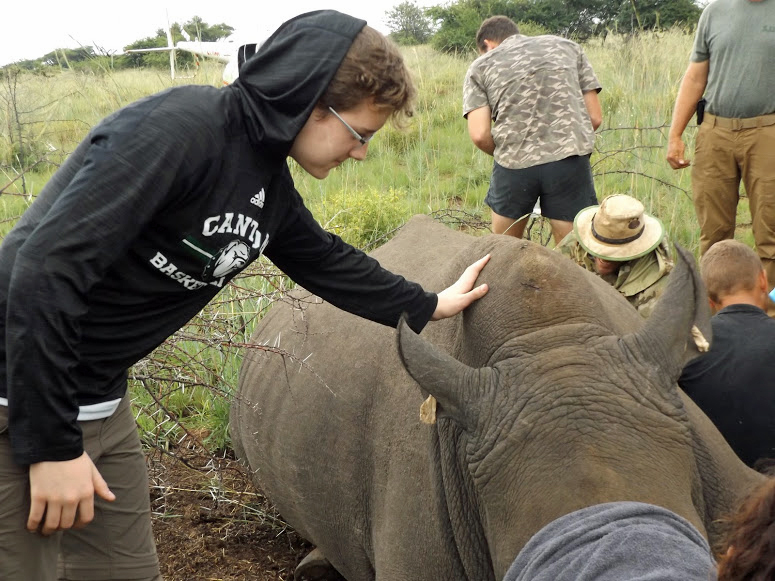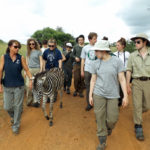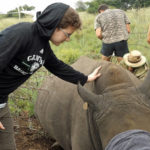Journey to Africa
By Canton Citizen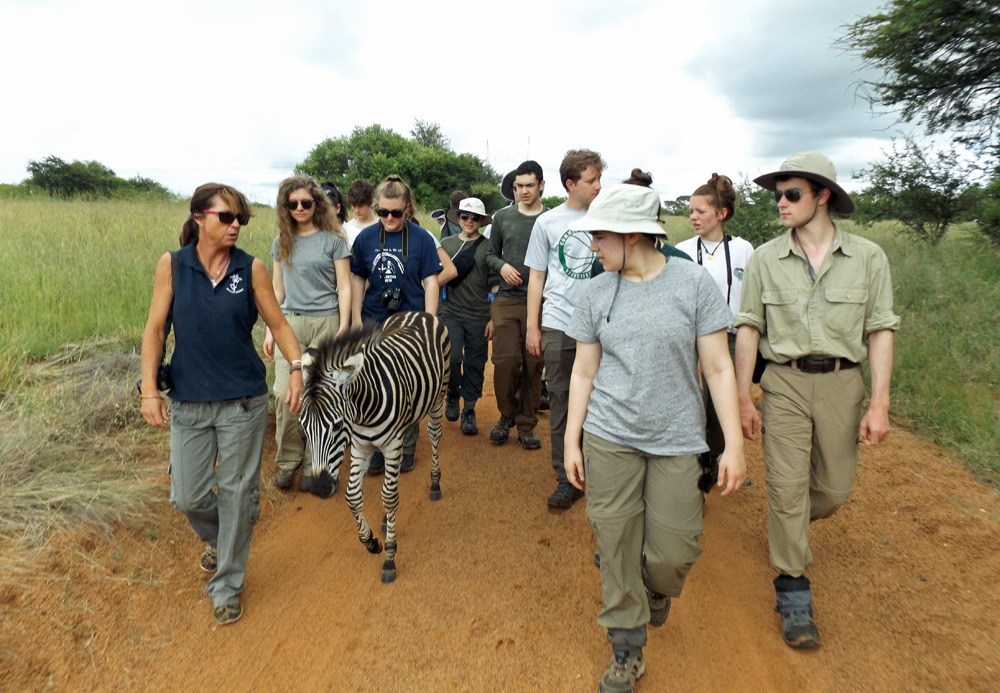
CHS students take a walk with a zebra during their recent trip to a South African wildlife reserve. (Photo courtesy of Rebecca Stang)
For the second time since 2017, a group of CHS biology students, under the leadership of Ms. Rebecca Stang, made the trek to South Africa’s North West Province to take part in a two-week field research expedition in coordination with Earthwatch International. The aim of the research efforts is to study the critically endangered white rhinoceros in hopes of developing strategies to conserve the species. Besides assisting scientists at the reserve, the students also visited Pilanesberg National Park and spent some time with students from a local high school.
An excerpt from one of the traveler’s journal entries is printed below with permission from the author. See this week’s Canton Citizen for more student journal entries and photos from the recent South Africa trip.
February 12
Today started off as a pretty normal day on the reserve. We all woke up and ate breakfast together at 7, and I had an apple, some oatmeal, and some toast. Unfortunately it was raining, so they had to rearrange the schedule we were planning on doing; instead of doing the planned fieldwork, we received a lecture on reserve management from the reserve’s founder, Dougal. He founded it about 30 years ago while he was an accountant at the nearby mining company, AEL, and wanted to look after the animals that were located inside some of the company’s land. He talked to us for a few hours about the day-to-day operations of Mankwe and how they maintain the population levels of the reserve …
After the lecture we had lunch, and then a little bit of free time. While I was working on my homework, Ms. Stang and Melissa, the volunteer coordinator we primarily worked with, suddenly came running up to us and told us to get into the trucks ASAP … While we were waiting to leave, they told us the exciting news: they noticed that a baby rhino that was less than a month old had a pretty bad limp and they wanted to have a vet examine her. To do this, they would have to tranquilize her and her mother so the vet would be able to work, and while they were under we would be able to get up close to them and even touch them! We were all very excited at the prospect, but it was not certain it would happen, as it was possible they would not be able to find them and would have to do it another day.
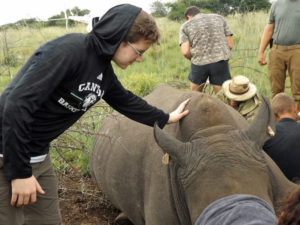 From there, we sped off to where the helicopter had landed. They landed in a clearing while they were waiting for the vet and the medicine to get there. We waited for a few minutes, and once they got there the pilot jumped in and the sniper loaded the tranquilizing agent, a chemical called M-99, into his rifle. In order to ensure that he would be safe, he would have to dart them from the helicopter. Also, while we were waiting, Melissa explained to us they wanted to further investigate the baby’s limp, because if it was a broken bone or something severe they would have to work on it as soon as possible. Once they took off, they began to fly around to try to find them while we and some of the reserve staff followed on the roads below. This went on for some time, until they actually found them and were able to successfully dart them.
From there, we sped off to where the helicopter had landed. They landed in a clearing while they were waiting for the vet and the medicine to get there. We waited for a few minutes, and once they got there the pilot jumped in and the sniper loaded the tranquilizing agent, a chemical called M-99, into his rifle. In order to ensure that he would be safe, he would have to dart them from the helicopter. Also, while we were waiting, Melissa explained to us they wanted to further investigate the baby’s limp, because if it was a broken bone or something severe they would have to work on it as soon as possible. Once they took off, they began to fly around to try to find them while we and some of the reserve staff followed on the roads below. This went on for some time, until they actually found them and were able to successfully dart them.
We quickly got to where they were unconscious, and it was a beautiful sight. It was amazing to see some of the most graceful animals on Earth up close. We were able to stand a few feet away from them, careful to stay out of the way of the vet and his staff. After performing a mobile x-ray, they determined that it was an abscess caused by a bacterial infection. Thankfully, this was something they could easily fix with a few shots. Once they finished, we were able to touch them. The one thing I remember most is how warm it felt. It was almost hot, and it was very soft. Especially the baby, she looked like she would feel so rough but she was so soft. It was a truly amazing experience that I am extremely grateful I got to experience.
-Jack Hernon
Short URL: https://www.thecantoncitizen.com/?p=53500

